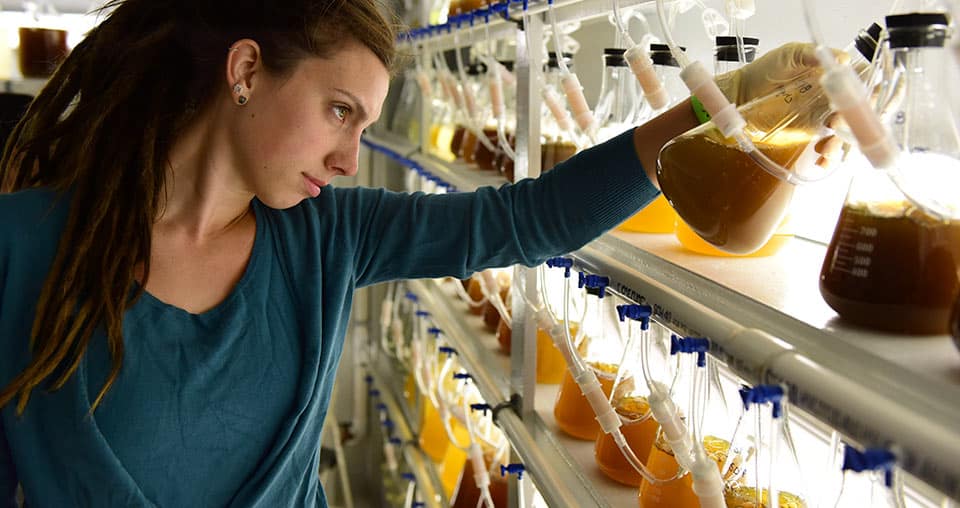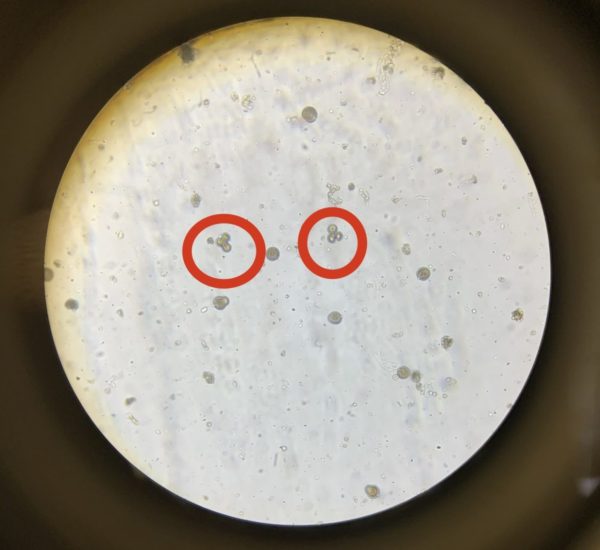We think it’s time for some positive news in these difficult times!
Sheltered at our remote Crocheron location, the hatchery team completed the first seed spawn of the season earlier this week. If all continues to go well, the juvenile oysters will be reared at the Hoopers Island nursery for eventual grow-out on our leases. And seed will be available for sale to fellow oyster farmers along the Atlantic seaboard from New Jersey to North Carolina.
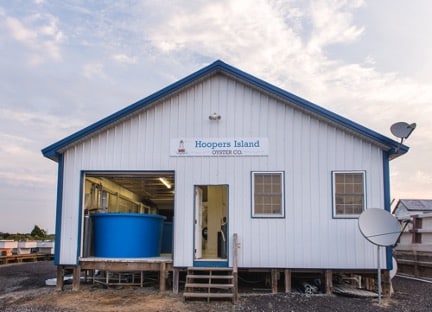
Using brood stock that was conditioned over eight weeks, hatchery technician Allison Fitzhugh used a scalpel to extract gametes from shucked ripe oysters.
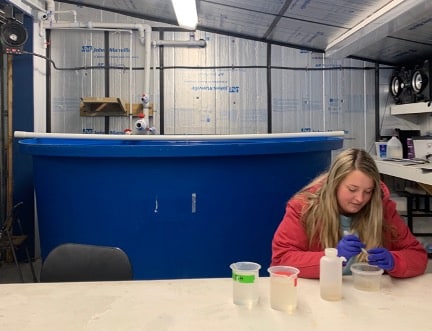
The next step was more than a drop in the bucket. Eggs from diploid females (those with two sets of chromosomes) were pooled together and mixed in seawater with the sperm from tetraploid males (those with four sets of chromosomes). Fertilization happened in a matter of minutes and cell division occurred over a 24-hour period.
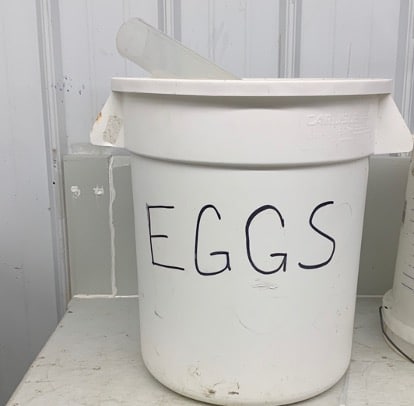
This look under the microscope shows the successful fertilization of the eggs approximately 45 minutes to an hour after exposure to sperm. The early stages of cell division can be noted in the eggs circled in red where one egg has turned into three cells.
In 24-48 hours – post fertilization – all the fertilized eggs will be free-swimming oyster larvae on their way to becoming seed.
In the rearing room, we then placed as many as 115 million fertilized eggs in our 1,500-gallon tank where the new larvae are growing. In just four weeks, we’ll have our first oyster seed of 2020.
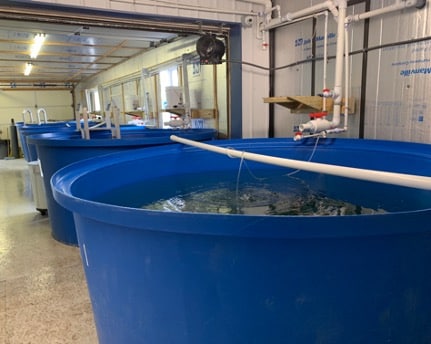
The larvae have quite an appetite. The algae is grown in our mass culture room so it can be introduced to the tanks and fed to the larvae four to eight times a day.
Producing algae for our growing hatchery is a big undertaking. We were proud to partner with Algafeed this year to condition our broodstock. Thanks to their support, we’re conducting onsite trials to identify the optimum food for our seed.
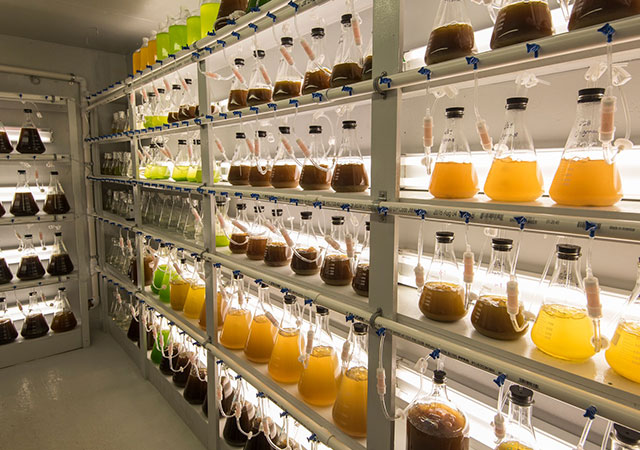
Eyed larvae and cultchless seed in varying sizes can be ordered in advance from our website.
The larvae have a setting rate of 15 to 20 percent with an average of 18 to 20 percent. Availability varies.
Seed is offered in seven sizes: 1, 2, 4, 6, 8, 10 and 12mm (options based on the screen size on which they retain; actual shell size is larger).
DBY-H or LOLA strains sold. Available April through November.

